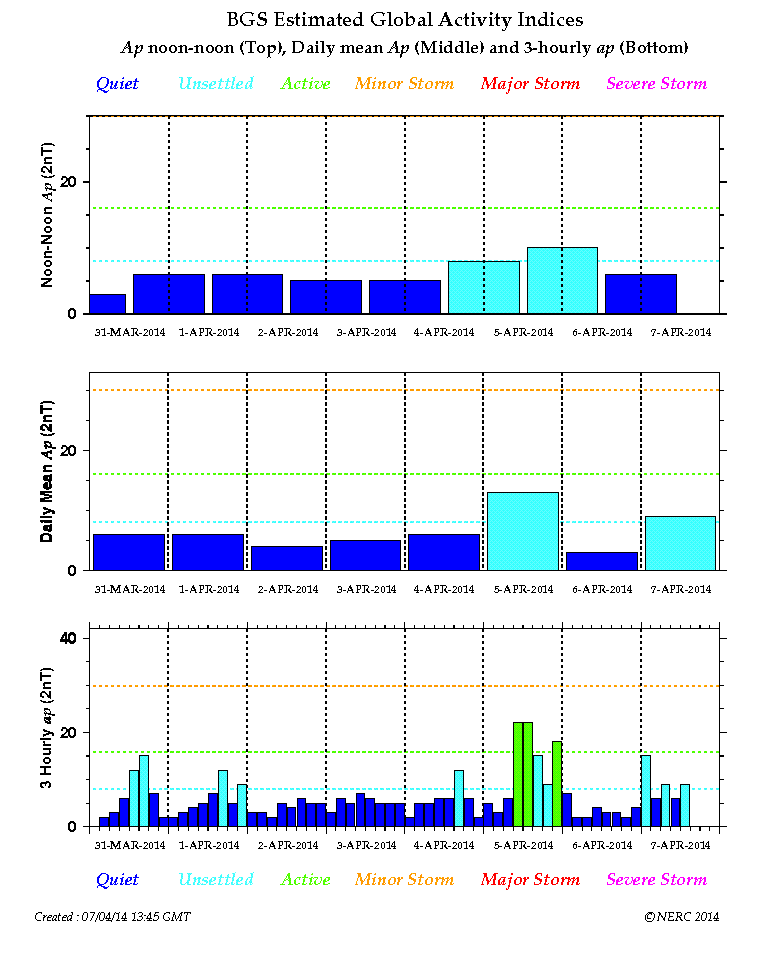Space Weather Update - 7 April 2014
What did happen?
The expected combination of two Coronal Mass Ejections (CMEs) arrived during the morning of 5 April. The CMEs did not carry significant southward magnetic field and geomagnetic effects were minor. Earth is now passing out of wake of the structure and no significant increase in geomagnetic activity is now expected
Sign-up to receive Geomagnetic Disturbance Alert emails.
Follow us on Twitter:
Follow @BGSauroraAlert for more occasional aurora alerts.
Follow @BGSspaceWeather for daily space weather forecasts.
Glossary
- BGS
- The British Geological Survey is one of the Natural Environment Research Council's Research Centres.
CME or Coronal Mass Ejection- The eruption of a portion of the outer atmosphere of the Sun into space, caused by rapid changes in its magnetic field. Often occurs along with a solar flare.
- Filament Eruption
- An eruption of solar plasma (i.e. ions and electrons) associated with the upward movement of solar magnetic field lines into the corona. Filaments are usually dark against the bright solar disk but can appear bright (as 'erupting prominences') on the limbs of the Sun against the darkness of space. Filaments are often associated with CMEs.
- Solar Flare
- Energy released by the explosive reorganisation of magnetic fields within the Sun's atmosphere.
Solar Wind- The ever-present expansion of the Sun’s hot outer atmosphere into the solar system, which carries space weather within it.
Sunspot- A region of intense magnetic field in the Sun's visible outer atmosphere often associated with flares and CMEs.

Models & Compass Variation
Space Weather
INTERMAGNET software

